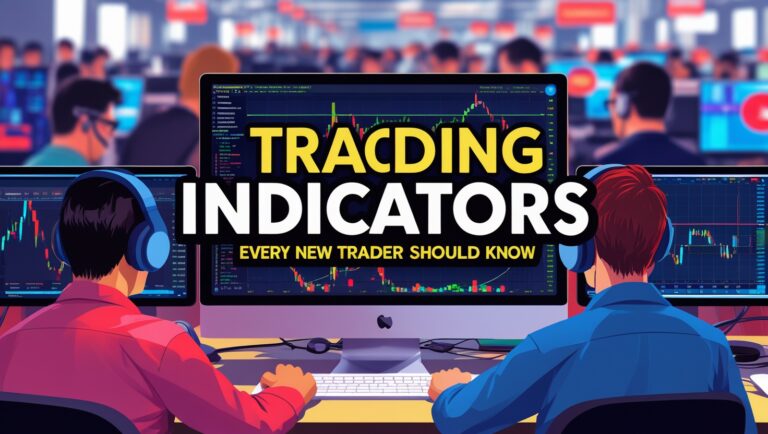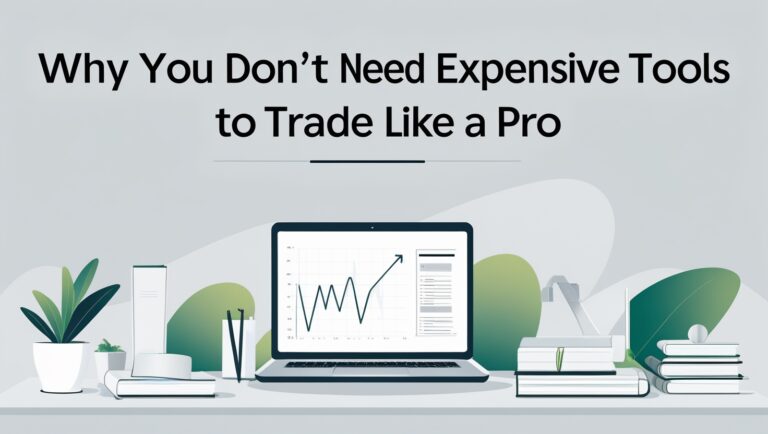How to Use Pre-Market Data to Build a Strong Watchlist
How to Use Pre-Market Data to Build a Strong Watchlist
One of the biggest shifts I made in my trading journey was learning to leverage pre-market data. Instead of guessing or waiting for alerts, I started my day with a clear plan — a focused watchlist based on what the market was already showing me before the bell rang.
Now I don’t start trading at 9:30AM blind. I already know what I’m watching, why I’m watching it, and what I’m waiting for.

Table of Contents
Why Pre-Market Data Matters
Pre-market activity reveals which stocks are in play for the day. Volume, gap ups or downs, breaking news — all of these happen before the market opens. And they give you a huge edge if you know what to look for.
Personally, I use this data to filter the noise. I’m not trying to trade 100 stocks. I’m trying to find the 5 or 6 with the highest probability of movement. That’s what my entire ebook is built around:
👉 Download it here if you want the exact checklist I use daily.
What I Look for in Pre-Market
Here’s what I scan every morning before the market opens:
- Top gainers with strong volume
- Gap-ups or gap-downs with news
- Unusual volume spikes
- Clear intraday ranges forming on the pre-market chart
If a stock is up 10% with barely any volume? I skip it. If a stock is moving without a catalyst? I skip that too. I’m looking for real interest — and volume confirms that interest.
How I Turn That Into a Watchlist
Once I have my list of candidates, I dive deeper:
- I check the float size — small floats move quicker.
- I check news catalysts — earnings, FDA approvals, contracts.
- I draw key levels from the pre-market chart.
- I ask: “Does this have room to run or will it hit resistance quickly?”
By the time the market opens, I’ve narrowed it down to 6 stocks max. That’s it. That’s my sweet spot. Enough to have options, but not so many that I get overwhelmed.
Pre-Market Doesn’t Guarantee Anything — But It Prepares You
The biggest mistake I used to make was assuming pre-market moves would continue all day. That’s not always true. But that’s not the point.
The point is — it prepares me. It gives me setups, levels, and context. It gives me confidence going into the session.
I don’t trade everything I watch. In fact, I might not trade any of them. But by doing the work in the morning, I stay sharp and selective.
Want My Pre-Market Checklist?
I break it all down inside my ebook — the exact way I scan, filter, and build my daily watchlist. And how I use that to trade only a few times a week — and still cover my bills with it.
This is the same system I use every single morning — and it changed everything for me. I no longer feel lost when the bell rings. I feel ready.
I used to spend hours after the market closed trying to figure out what went wrong. Now, by focusing on pre-market structure, I spot most of the traps before they happen. I’m not reacting — I’m planning.
One of the keys to using pre-market data effectively is pattern recognition. Certain stocks move the same way after showing the same kind of volume early in the morning. I pay attention to these patterns and jot them down in my notes.
I also avoid one big mistake beginners make: overloading the watchlist. The more stocks you try to watch, the more likely you are to miss clean entries. I keep it tight and focused.
Another thing I do is compare pre-market volume to average daily volume. If a stock normally trades 500K shares and it’s already at 2 million before 9:30AM — that tells me something’s happening.
This is also how I avoid FOMO. If I know the top setups from my pre-market research, I don’t chase random tickers later on. I stick to my plan. It’s the reason I stay consistent.
And if the market is slow? I still go through my checklist. Some of my best trades came from days where almost nothing moved — but one stock stood out because of early volume and news. I was ready.
One underrated tip: check sector momentum. If a few healthcare stocks are running in pre-market, others in the same sector might follow. I include sector trends in my pre-market notes.
I also use free tools to pull this data — no expensive subscriptions. My ebook shows how to do all this with zero paid scanners. Just smart filtering.
Once my list is built, I mark key levels like pre-market high, low, and VWAP. These become my support and resistance guides once the bell rings. No indicators needed.
Over time, this process has helped me avoid burnout. Instead of feeling stressed when the market opens, I feel clear-headed. All because I did the prep in the pre-market window.
I never rush this part of the day anymore. It only takes 20–30 minutes, but the results have been game-changing. My win rate is higher, and my confidence is stronger.
If you’re trying to become consistent with a small account, mastering your pre-market routine is one of the best things you can do. It’s simple, free, and gives you a daily edge. And if you want my exact process, it’s all inside my ebook here.
I also pay close attention to gap-ups and gap-downs. These usually tell me where the momentum — or fear — is building. A stock gapping up with strong pre-market volume often signals interest from institutions or news-driven movement.
Every morning, I also write a short sentence next to each stock explaining why it’s on my list. Is it breaking out of a range? Did it get an analyst upgrade? Just doing this helps me stay intentional with my trades and avoid random decisions.
Finally, the more I refine my pre-market routine, the more I realize that it’s not about finding 100 perfect stocks — it’s about finding just 1 or 2 that match my setup perfectly. And that only happens when you treat the pre-market as your prep window, not just a warm-up.

Stay ahead in the stock market! Subscribe to our newsletter and receive exclusive stock flow reports, trading insights, and actionable tips directly in your inbox. Join thousands of traders who get our updates first.







